Entering the USA
Before traveling to the United States, you should familiarize yourself with the rules and procedures at the airport and border. We explain entry requirements, security regulations, and travel documents and give you important tips for entering the USA.
- Requirements for a USA trip
- Documents for entry to the USA
- Passport for USA travel
- ESTA, Visa, or Green Card?
- Travel forms for USA flights
- Other documents for US entry
- USA entry with children
- Entry requirements for the USA
- Import regulations for the USA
- Taking pets to the USA
- Procedure for entering the USA
- 1. Checking in for a USA flight
- 2. Security check at the airport
- 3. Boarding and flight
- 4. Landing and passport control
- 5. Baggage claim and customs
- Tips for entering the USA
- USA entry denied: what now?
Take the chance of living in the USA and apply for the official US Green Card Lottery!
Requirements for a USA trip
Shortly after booking your flight, you will be asked to provide personal information so that the US authorities can verify your eligibility to enter the country.
Further questions and applications and the submission of additional documents will occur around your travel authorization and on the day of your entry. You must meet the following requirements to travel to the United States:
- You have a valid passport or Green Card.
- You have a valid ESTA or US visa that matches your passport data (not applicable to Green Card holders).
- You do not pose a threat to the USA or the American people.
- You are not subject to an entry ban.
- You have the required immunizations at the time of entry or fall into one of the exemption groups.
- U.S. Customs and Border Protection border agents deem you eligible to enter the United States after a brief interview.
Documents for entry to the USA
The most important documents for entering the United States include your passport and entry permit (e.g., ESTA or US visa). However, depending on your reason for traveling, there is more paperwork.
Passport for USA travel
To enter the States, you will usually need a passport, which has different requirements depending on the reason for travel and the visa category. ESTA travelers, for example, need a biometric passport, while for a US visa, a temporary passport is also sufficient.
Convenient: Holders of a Green Card ("Permanent Residents") can travel to the USA without a passport, as the Green Card is considered a "secure document" by the US authorities.
| Passport for traveling to the USA | ESTA | US-Visa | Green Card |
|---|---|---|---|
| Biometric passport | ✔️ | ✔️ | ✔️ |
| Temporary passport | ❌ | ✔️ | ✔️ |
| Is entry without a passport possible? | ❌ | ❌ | ✔️ |
Passport validity for US entry
Your passport must be valid at least until the day of your departure from the USA if the issuing country is a member of the so-called Six Month Club. If your home country is not among the 127 countries in the Six Month Club, then your passport will be valid for six months beyond the date of your entry.
ESTA, Visa, or Green Card?
Whether you are better off traveling to the USA with the ESTA electronic travel authorization or a US visa depends largely on the purpose of your trip and your individual needs. However, you will need one of each unless you are a Green Card holder or a US citizen.
Your rights and responsibilities in the United States vary depending on the type of travel and residency permit. While a Green Card allows you to enter and leave the country freely and gives you (almost) unlimited rights in the USA, a visa only allows you to enter for a specific purpose (e.g., to study on a student visa).
ESTA is the quickest and cheapest of all to obtain, but it limits your stay to 90 days at a time for tourist or business purposes. The differences between ESTA, US visa, and Green Card at a glance:
| Travel authorization USA | ESTA | US visa | Green Card |
|---|---|---|---|
| Application | Online application | US Embassy or US Visa Service | Green Card Lottery |
| Waiting time for approval | maximum 72 hours | several weeks or months (depending on category) | several weeks or months1 |
| Duration of stay | 90 days at a stretch | 180 days and more (depending on category) | unlimited |
| Validity | 2 years | 10 years | unlimited2 |
| Rights in the USA | Tourism and short business trips | depending on category | unlimited3 |
| Permission to work? | no | depending on category | yes |
| Permission to reside? | no | depending on category | yes |
| Permission to study? | no | depending on category | yes |
1 When participating in the Green Card Lottery, it takes a few months from winning to receiving the Green Card.
2 The physical Green Card (document) must be renewed after ten years, but this does not affect the Green Card holder's lifelong rights. They remain in effect even if the card has expired.
3 Except for the right to vote at the federal level, Green Card holders have the same rights as US citizens.
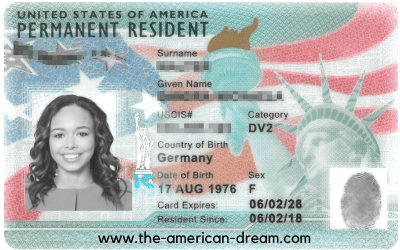
For Green Card holders, entry into the USA is the easiest.
Travel forms for USA flights
If you are traveling to the USA, you will need to provide some data for the US Transportation Security Administration (TSA), Customs and Border Protection (CBP), and the Centers for Disease Control and Prevention (CDC). Therefore, you will encounter various online and paper forms:
TSA data request (Secure Flight)
For security reasons, your airline will request personal information such as date of birth, gender, and passport information on behalf of the Transportation Security Administration (TSA) when you book your airline ticket.
APIS data query
A few hours before your departure, the airline must transmit your data and your first stay address in the USA to the US authorities. To do so, you must either complete a separate online form as prompted by the airline, or the data will be transmitted automatically based on the information you provide in the (then slightly expanded) TSA query.
Customs declaration for the USA
With the Customs Declaration (CBP Form 6059B), you declare what goods, means of payment, and food you will be bringing into the USA. The paper form has been officially abolished for environmental reasons and replaced by the electronic declaration at passport control. However, paper forms are still occasionally seen on flights and in arrival halls.
I-94 form
Customs and Border Protection stores the date of your latest departure in an electronic entry form, the correctness of which you should briefly check. To do this, go to the I-94 website and enter your personal information to find your entry.
Attention
An incorrect date must be corrected at the US border before you enter the country in order to avoid problems when leaving the United States.
Other documents for US entry
Border officials may require additional documents to your passport and ESTA or visa when you enter the United States. These include:
- Proof of sufficient financial resources (e.g., bank statements)
- Return or onward travel tickets
- Health certificates (e.g., if carrying medication or exhibiting conspicuous behavior)
- Proof of fulfillment of your visa purpose (e.g., student enrollment) Employment contracts, pension notices, rental agreements, or other proof of ties to your home country
At the United States border, immigration officials will decide whether or not you will be allowed to enter the country. Remain friendly and calm during the interview and follow all instructions.
USA entry with children
If you are traveling to the USA with minors, they will need their own ESTA application or visa. You must also be able to prove upon request that you have the right to travel with the child.
We recommend carrying the following documents with you:
- Certified translations of birth certificates
- Certified powers of attorney from any other legal guardians
- Copies of ID cards and contact details of all guardians
- Consent of the child to travel (signature), if possible
Entry requirements for the USA
Before your trip to the USA, read the current entry regulations and be sure to comply with them. In addition to current health regulations, they include import requirements for goods, food, and more.
Import regulations for the USA
The CPB are responsible, among other things, for ensuring that international travelers do not harm the American people and native wildlife and plants. Tax evasion cases (e.g., smuggling valuable goods or large amounts of money) also fall under this jurisdiction.
Adhere to the following rules for bringing goods, food, and means of payment into the USA and rather over-declare than under-declare at customs:
| Import regulations USA | |
|---|---|
| Alcoholic beverages | Maximum quantities depend on the US state. Check with the Alcoholic Beverage Control (ABC) for information. |
| Cultural artifacts and objects of cultural value | Only with export permits and receipts |
| Animal skins | Dog and cat skins, as well as products made from them, are prohibited. |
| Drug paraphernalia | Carrying drug paraphernalia is prohibited in the United States (exceptions for medical purposes). |
| Firearms | Only through a licensed importer, dealer, or manufacturer with approval from the Bureau of Alcohol, Tobacco, Firearms and Explosives (ATF) |
| Wildlife / Game animals | Only with permission from the U.S. Fish and Wildlife Service (also parts or products such as hides, tusks, bones, feathers, or eggs) |
| Food | Allowed in unopened packages: chocolate and other candy, baked goods, flour, pasta (without egg), rice, spices, nuts, dried fruits, vegetable oils, coffee, and tea Prohibited: Meat, fresh dairy products, plants, candy with non-edible items, seeds, tubers, meat broth, and soup mixes |
| Medication | Medications approved (legal) in the USA may be imported for personal use. Carry a prescription or doctor's letter and contact the U.S. Food & Drug Administration (FDA) if you are unsure. |
| Gifts | Allowed up to a value of $ 100 |
| Means of payment | Cash or cash equivalents up to $ 10,000 allowed |
| Pets | Special rules depending on species and US state. Check the Centers for Disease Control and Prevention website for more information. |
Taking pets to the USA
If you need to take dogs, cats, or other pets with you because you are emigrating to the United States, you must be able to provide detailed documentation for each animal when entering the country.
Your first visit should be to the veterinarian's office to discuss how to proceed in your particular case. Here are some things to remember when traveling to the USA with pets:
- Blood tests
- Vaccinations
- Microchips
- Special permits (e.g., for parrots)
- Current health certificates
- Special requirements of your airline
Put the well-being of your four-legged or feathered friend first when planning a trip to the USA. Ask both the airline and the veterinarian the following questions in advance:
- How large must or may the transport box be?
- Should or may the animal fly in the passenger compartment?
- What are the conditions when flying in the cargo hold?
- How much noise is the animal exposed to, and what are the temperatures during the flight?
- How long are the flight and waiting times?
- Would a gentle sedative be advisable for the pet?
Do not take your pet on the trip unless you have all questions answered in full. When in doubt, placement in a loving foster home is better for the pet than the rigors of travel for temporary stays in the USA.
Procedure for entering the USA
On travel day, get to the airport on time (about three hours before your flight) to allow enough time for all the steps in the entry process. These usually look like the following:
- Online check-in or check-in at the counter and bag drop
- Entering the security area for a security check (with body scanner, pat-down, and opening of hand luggage, if necessary)
- Arrival at the gate and boarding
- Landing and passport control
- Baggage claim and going through customs
1. Checking in for a USA flight
By checking in, you are registering with your airline for your flight to the USA. In many cases, this can be done online several days before your trip. If you're traveling with carry-on luggage only, online check-in can save you valuable time and help you pick a seat early (if you haven't already at the time of booking).
If you want to drop baggage, you must go to the check-in counter or a check-in machine, where you will also be handed your boarding pass or have it printed out.
Tip
After checking in online, you will receive your boarding pass as a mobile version. Print it out as a precaution because you will not always be able to use your smartphone during entry into the USA.
Boarding pass information
Your boarding pass will show your flight number, seat number, departure time, and the gate where your plane will be departing. However, keep an eye on the display boards in the terminal, as gate changes happen somewhat often.
2. Security check at the airport
The pre-flight security check includes screening your carry-on luggage and possibly a pat-down and body scan. Keep your boarding pass and passport on hand during this process.
In preparation for the security check, stow small amounts of liquids in zip bags, remove all electronic devices from your luggage, and make sure you can quickly remove shoes, belts, and more.
Place loose items, jackets, belts, hats, and scarves in the plastic trays at the conveyor belt. Electronic devices such as laptops, smartphones, and cameras must be pushed through the X-ray machine separately and therefore belong in a separate carrying case. You may not take potentially dangerous items such as nail scissors onto the plane. Be sure to adhere to the no-carry signs in the security area.
Second security check / SSSS endorsement
If you are flagged for a second security check, you will have the designation "SSSS" (short for "Secondary Security Screening Selection") printed or written on your boarding pass. In this case, you will go through a detailed interview with Border Patrol agents in a separate room before entering the United States and will be thoroughly screened again.
The so-called "selectees" for the SSSS are picked by a computer. The selection may have to do with your type of flight booking (e.g., one-way ticket) or the timing of the ticket purchase (e.g., right on the day of the flight). Remain friendly, answer truthfully, and inform the border officials if you do not understand English well.
3. Boarding and flight
After a short wait at the gate, the various passenger groups (e.g., business travelers, families with children, or passengers from seat rows 1-15) will be called one by one and allowed to board the aircraft.
Find your seat, properly stow your carry-on luggage in the upper compartments or footwell, and enjoy your flight.
4. Landing and passport control
After landing, you must remain seated for a short time until the signal to disembark is given. Then proceed to the waiting area in front of passport control and join the correct queue:
| Queuing right at US passport control | |
|---|---|
| Visitors | Foreign travelers without a Green Card or ESTA |
| Global Entry | Members of the Global Entry Program |
| US Citizens, Canadian Citizens, Permanent Residents | Green Card holders and owners of American or Canadian passports |
| ESTA / Visa Waiver | Foreign travelers with ESTA approval |
At some airports, ESTA travelers are allowed to use the "fast lane" for Green Card holders and US citizens. Often, they are also guided to automatic passport control, which saves a lot of waiting time.
Mobile phone ban at US airports
The border area at the airport is a cell phone-free zone! Be sure to ask permission if you need to make an urgent call or send a message.
Automated Passport Control (APC)
If you are directed to the Automated Passport Control, you scan your passport on a computer, have a photo taken, give a fingerprint, and answer a series of questions. Afterwards, you will get a receipt to present to the officers.
Passport control by a border guard
A border agent may question you upon entry into the USA. The main purpose is to rule out any immigration intent by travelers who do not hold an immigrant visa.
Typical questions in the entry interview are:
- "Why are you visiting the USA?"
- "How long are you staying?"
- "Where will you be staying?"
- "What's your first address in the States?"
- "Who are you visiting?"
Answer briefly, accurately, and truthfully. If you have any comprehension problems, tell the border agents at the beginning of the questioning and they will take it into account.
First US entry with a Green Card
The first entry into the United States as a new "Permanent Resident" (US immigrant visa holder) is not yet with the Green Card in hand, but with an immigrant visa endorsement from the embassy in your passport.
This is because the issuance of the physical Green Card must first be activated by entering the USA and handing over important documents at the border. Therefore, the first entry is called the "activation trip."
Shivers down your spine
The Green Card activation trip holds a special moment for the newly arrived US residents: instead of a stern look and probing questions, the border agent looks up and says, "Welcome home!"
Should you observe people slipping mysteriously sealed envelopes across the counter to border agents and then bursting into tears of joy, you are probably witnessing the first entry of recent Green Card winners.
-
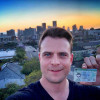 There are moments of pure joy in life. After my first participation I won in the second draw. This is not only a dream come true but also a strong desire. I wish everyone else best of luck. And thanks a lot to The American Dream team.Show more Show lessPatrick S. - Dübendorf, Switzerland
There are moments of pure joy in life. After my first participation I won in the second draw. This is not only a dream come true but also a strong desire. I wish everyone else best of luck. And thanks a lot to The American Dream team.Show more Show lessPatrick S. - Dübendorf, Switzerland -
 We always had it in the back of our minds: at some point, we want to go to the United States. Of course, we participated in the Green Card Lottery, but you never know in advance: When will you be lucky? It comes all of a sudden and unexpectedly.Show more Show less
We always had it in the back of our minds: at some point, we want to go to the United States. Of course, we participated in the Green Card Lottery, but you never know in advance: When will you be lucky? It comes all of a sudden and unexpectedly.Show more Show less
I opened the email, and it said "Congratulations!" That made me feel funny at first. And then I went crazy with joy! We had good support through The American Dream. That was the main thing for us as self-employed people: you don't have much time to take care of things on the side. It lifted a burden from us.
Stefan and Stanija Kassek - Green Card winners from Brüggen -
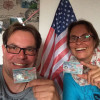 Unbelievable – We are actually holding our Green Cards in our hands! The first try was already successful. Last year on Peter’s birthday we received the winner’s notification. This year’s birthday we were in Los Angeles. Our activation trip was magical. Thanks so much to the TAD team for the trouble-free experience!Show more Show lessPeter and Svenja L. - Bahlingen, Germany
Unbelievable – We are actually holding our Green Cards in our hands! The first try was already successful. Last year on Peter’s birthday we received the winner’s notification. This year’s birthday we were in Los Angeles. Our activation trip was magical. Thanks so much to the TAD team for the trouble-free experience!Show more Show lessPeter and Svenja L. - Bahlingen, Germany -
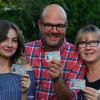 We were lucky enough to win the second time we tried! From that moment on The American Dream was very helpful and supportive. Thank you very much for your friendly assistance in the past couple of months, great team! It wouldn’t have been possible without you! In July 2018 we went on our activation trip and next February we are flying over again to turn our American dream into reality.Show more Show lessUlrich, Andrea & Lena V. - Dresden, Germany
We were lucky enough to win the second time we tried! From that moment on The American Dream was very helpful and supportive. Thank you very much for your friendly assistance in the past couple of months, great team! It wouldn’t have been possible without you! In July 2018 we went on our activation trip and next February we are flying over again to turn our American dream into reality.Show more Show lessUlrich, Andrea & Lena V. - Dresden, Germany -
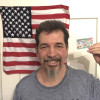 I would like to thank you for your support and help in obtaining my Green Card! For me it already worked after the 2nd time. I had no idea how to proceed from there. But thanks to the great support of your team everything went very easy :-) Since my grandfather came from the USA, I still had no chance to immigrate unbureaucratically. So I tried it via TAD and was happy that it worked out after the 2nd time. Now I can realize my dream and get to my roots. To all participants... never lose hope!Show more Show lessHelmut H. - Munich, Germany
I would like to thank you for your support and help in obtaining my Green Card! For me it already worked after the 2nd time. I had no idea how to proceed from there. But thanks to the great support of your team everything went very easy :-) Since my grandfather came from the USA, I still had no chance to immigrate unbureaucratically. So I tried it via TAD and was happy that it worked out after the 2nd time. Now I can realize my dream and get to my roots. To all participants... never lose hope!Show more Show lessHelmut H. - Munich, Germany -
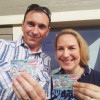 After 7 years and 14 applications (my wife and I both participated to double the chances) it finally worked in 2018! Now we can finally arrive where our heart has been home for a long time. Many thanks to the TAD team for their always friendly and helpful support before, during and after the win. In autumn we will be heading to Texas, where we will live our American Dream! Our tip to all those who have not yet won: Believe in your dream, stick with it and don't give up!Show more Show lessBernhard & Alkestis-Nikola Z. - Vienna, Austria
After 7 years and 14 applications (my wife and I both participated to double the chances) it finally worked in 2018! Now we can finally arrive where our heart has been home for a long time. Many thanks to the TAD team for their always friendly and helpful support before, during and after the win. In autumn we will be heading to Texas, where we will live our American Dream! Our tip to all those who have not yet won: Believe in your dream, stick with it and don't give up!Show more Show lessBernhard & Alkestis-Nikola Z. - Vienna, Austria -
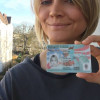 Dear American Dream Team,Show more Show less
Dear American Dream Team,Show more Show less
although my dream of emigrating to California has faded into the background, participating in the Green Card Lottery has become a small tradition. When it actually worked after 10 years, I just had to take this unique chance, because you never know what the future will bring...
Thanks a lot!Steffi M. - Hamburg, Germany -
 It worked out the first time and now I'm going to mix up the media industry in Los Angeles a bit! Thanks to TAD for making this possible and the support.Show more Show lessMatthias H. - Munich, Germany
It worked out the first time and now I'm going to mix up the media industry in Los Angeles a bit! Thanks to TAD for making this possible and the support.Show more Show lessMatthias H. - Munich, Germany -
 Thanks to the great support from The American Dream, my dream of living in the USA is now a reality! I am heading towards the Sunshine State Florida where I have the feeling that I am at home.Show more Show lessJacqueline L. - Essen, Germany
Thanks to the great support from The American Dream, my dream of living in the USA is now a reality! I am heading towards the Sunshine State Florida where I have the feeling that I am at home.Show more Show lessJacqueline L. - Essen, Germany -
 "Don't chase your dream, run towards it." So I spontaneously applied for the Green Card Lottery and on the first try it worked. Thanks TAD for the great support and always friendly assistance. I wish everyone else good luck.Show more Show lessBettina B. - Abu Dhabi, U.A.E.
"Don't chase your dream, run towards it." So I spontaneously applied for the Green Card Lottery and on the first try it worked. Thanks TAD for the great support and always friendly assistance. I wish everyone else good luck.Show more Show lessBettina B. - Abu Dhabi, U.A.E.
Transit in the USA
If you have a stopover within the USA, you must collect and recheck your baggage. If the stopover is outside the United States, this rule usually does not apply. As a precaution, check with the ground staff for the current procedures.
Waiting times for entry at the US airport
Whether you have ESTA, a US visa, or a Green Card, you will need to allow some time after landing before finally setting foot on American soil. Travelers with a Green Card usually get across the border the fastest. For current wait times, check the MyTSA app.
5. Baggage claim and customs
Just like passport control, you can expect wait times at the baggage carousel after arriving in the US. Once you have picked up your suitcase from the conveyor belt, proceed to the customs area.
Customs search in the USA
Even if you have not indicated any declarable goods in your customs declaration, you may be subject to further inspection of your luggage. When opening, unpacking and repacking your luggage, follow the instructions of the customs officials carefully and always remain friendly.
After passing through the customs area, you will be allowed to leave the airport. Welcome to the United States of America!
Tips for entering the USA
During your travel preparations and your entry into the USA, you can save time and money with the following tips:
- If you want to lock your suitcase, use an official TSA lock from the Transportation Security Administration. This will prevent having your lock destroyed for searches, as the authorities have a TSA master key.
- Weigh your suitcase before you go and declare any excess baggage to the airline via an online application. The fees will be cheaper than checking in your luggage at the airport.
- A check-in machine can save you long waits at the counter and even includes baggage check-in at a designated station.
- If you want to get rid of application processes, long waits, and interviews once and for all, participate in the Green Card Lottery! Every year, the US government gives away 55,000 immigrant visas.
- Point out any language barriers in all conversations with American officials or airport employees. Time-consuming misunderstandings and stressful situations can be eased this way.
- To avoid lengthy questioning and inspections upon entry, review and clean up your social media presence before a trip to the United States. Overly critical comments or jokes about the US government can get you in trouble.
- Do not carry work credentials in your carry-on luggage unless you are officially entering the USA on a work visa or as a Permanent Resident. Border officials may otherwise suspect that you are attempting to work illegally.
USA entry denied: what now?
The US border is one of the toughest in the world. In a typical year, more than 270,000 travelers are denied entry. The reasons are varied, and sometimes it's just a vague gut feeling of Border Patrol agents.
Common reasons for denial of entry include:
- A criminal record
- A history of illegal employment in the United States
- Medical problems that may pose a risk of harm
- Lack of immunizations
- Current travel bans/entry suspensions
- Misrepresentations in ESTA and visa applications
- Expired visas or ESTA approvals
- Missing documents
- Strange or suspicious behavior
If a border agent does not believe you are fit to enter the country, they will ask a colleague for a second assessment. If that second officer also denies your entry, this decision is final, and you will have to fly back home for now.
Upon your return home, contact the Department of Homeland Security (DHS) and use the Traveler Redress Inquiry Program online form to request details of the decision and assistance in the proceeding.
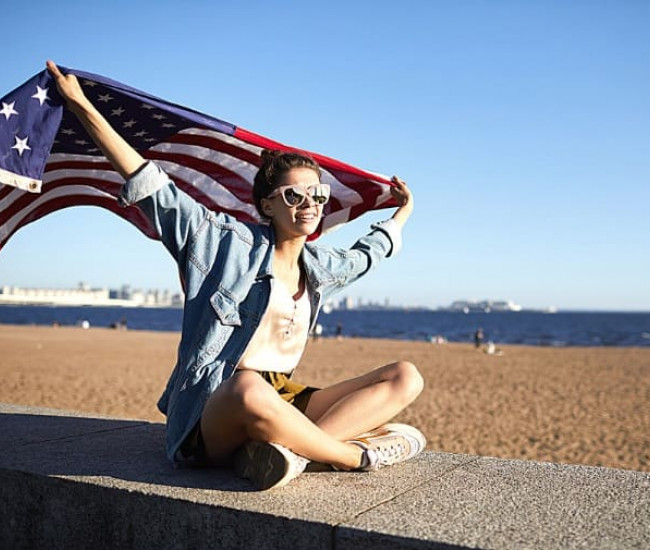

 DE
DE EN
EN ES
ES FR
FR IT
IT PL
PL TR
TR UA
UA